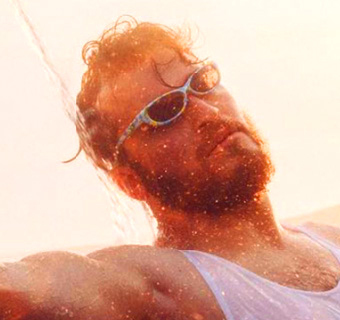Table of Contents
Influencer marketing leverages the influence of individuals or entities (known as influencers) to promote a brand, product, or service. It is a way for brands to tap into the social importance of individuals who have built up large followings on platforms like Instagram, YouTube, and TikTok. The concept of influencer marketing is not new. Read ahead to learn about the history of influencer marketing!
Before Influencer Marketing Came Endorsement Marketing
Endorsements from kings, queens, and well-known celebrities have been done for centuries. Brands would partner with high-profile actors, athletes, musicians, or other celebrities to promote their products.
The basic idea was that if a famous person used a product, it would lend credibility and prestige to that brand. As a matter of fact, the first official endorsement from a female celebrity was Lillie Langtry, a famous actress and producer. She appeared in the first advertisement for Pears Soap back in 1882!
However, the rise of social media has transformed how brands approach marketing. Today, people can build large and engaged followings on social media platforms. This makes influencers just as effective at promoting brands as traditional celebrities but at a fraction of the cost! As a result, influencer marketing has become a key part of many brands’ marketing strategies.
Endorsement Marketing Examples
One of the most successful celebrity endorsement examples in the history of influencer marketing is Michael Jordan’s endorsement deal with Nike in the 1980s and 1990s. Jordan’s association with the brand helped to elevate Nike’s profile and cemented the company’s position as a leader in the athletic footwear and apparel industry. Here are some more awesome examples of endorsement campaigns that set the stage for the birth of influencer marketing:
- Pepsi’s campaign with Beyoncé: Beyoncé’s partnership with Pepsi helped to promote the brand’s products to a younger, more diverse audience. The campaign included a commercial featuring Beyoncé, an interactive website, and a social media campaign.
- L’Oreal’s partnership with Jennifer Lopez: Jennifer Lopez’s partnership with L’Oreal helped to promote the brand’s beauty products to a broader audience. The campaign included TV commercials, print ads, and online promotions.
- Apple’s “Get a Mac” with Justin Long and John Hodgman: This campaign featured a series of TV commercials that compared Macs to PCs. The ads featured Justin Long as the “cool” Mac and John Hodgman as the “uncool” PC.
- CoverGirl’s partnership with Rihanna: Rihanna’s partnership with CoverGirl helped to promote the brand’s makeup products to a younger, more diverse audience. The campaign included TV commercials, print ads, and online promotions.
- Nespresso’s campaign featuring George Clooney: George Clooney’s partnership with Nespresso helped to promote the brand’s coffee machines to a broader audience. The campaign included TV commercials and online promotions.
Downsides of Endorsement Marketing
The bad thing, however, about celebrity endorsements is that they were typically reserved for big-budget campaigns and not accessible to most brands. Small and medium-sized businesses simply couldn’t afford to pay millions of dollars to a celebrity for a single endorsement deal.
View this post on Instagram
That’s where influencer marketing comes in. Social media has democratized the process of endorsement marketing, making it accessible to a much more comprehensive range of brands. Today, influencers of all sizes and types can partner with brands to promote products and services.
Nowadays, the cost of these partnerships can vary widely depending on the size and engagement of the influencer’s following. For example, a brand might partner with a micro-influencer who has only a few thousand followers, or they might partner with a mega-influencer who has millions of followers.
The Emergence of Social Media
The emergence of social media platforms such as Twitter, YouTube, and Instagram in the late 2000s and early 2010s transformed the history of influencer marketing. This altered how people interacted with each other and how businesses engaged with their customers. Suddenly, anyone with an internet connection could create and share content with the world. This led to a new digital content creation and consumption era, and a new generation of internet stars emerged.
Every day people began to build large followings on social media platforms by creating content that resonated with audiences. This content ranged from funny memes to makeup tutorials to political commentary, and everything in between. As people’s followings grew, brands began to notice and reach out to these influencers for partnerships and collaborations.
A prime example that highlights the history of influencer marketing is when fashion influencer Chiara Ferragni started her blog, The Blonde Salad, in 2009. Over the years, she built up a massive following on social media, and in 2017, she was named one of Forbes’ top influencers. Today, Ferragni partners with brands like Dior, Lancôme, and Pantene.
View this post on Instagram
Likewise, the history of influencer marketing has helped show the world that brands can reach younger audiences which traditional advertising can’t do. According to a recent survey by Influencer Marketing Hub, 63% of marketers plan to increase their influencer marketing budgets next year. This shows just how important influencer marketing has become for businesses of all sizes.
The rise of social media platforms like Twitter, YouTube, and Instagram in the late 2000s and early 2010s gave rise to a new generation of internet stars. These influencers have become incredibly valuable to brands looking to reach younger audiences and build consumer trust.
Love hearing about successful influencers? For the fastest growing influencers you need to be following now, check out our list here.
The Evolution of Sponsored Content
As brands began to recognize the potential of social media influencers, they realized that these influencers could be just as effective at promoting their products as traditional celebrities. Unlike celebrity endorsements, influencer marketing allowed brands to reach targeted, niche audiences that were difficult to reach through traditional advertising.
In the early days of the history of influencer marketing, brands would send their products to influencers and ask them to share their thoughts on social media. This organic, unpaid content was often more effective than traditional advertising because it felt more authentic and genuine to the audience.
However, as the popularity of influencer marketing grew, brands began to offer payment to influencers for their content. This led to the rise of sponsored content, where influencers would receive compensation for creating content that promoted a brand’s products or services.
@elementaryschoolmagic #tiktokmademebuyit #tiktokshop #influu #ad #sponsored #lamp #nightstand #homedecor #cheaphomedecor #affordable #lamps #homeimprovement #nightstandorganization #nightstandstyling #nightstandfinds
Today, influencer marketing has become a multi-billion dollar industry. According to a study by Yahoo, the influencer marketing industry is expected to be worth nearly $70 billion by 2029. This growth has been driven by the increasing popularity of social media platforms and the rise of micro-influencers, who have smaller followings but higher engagement rates with their audiences.
As influencer marketing has evolved, so too have the regulations governing it. In the United States, the Federal Trade Commission requires influencers to disclose when they have been paid to promote a product. This has led to the rise of the hashtags #sponsored and #ad. Influencers use these hashtags for sponsored posts. But beware – as a business, you have to avoid making crucial influencer marketing mistakes!
The Future of Influencer Marketing
As the world of social media continues to evolve, so too does the world of influencer marketing. Today, influencers are not limited to platforms like Instagram and YouTube. They are also active on TikTok, Clubhouse, and even Twitch!
In addition, new technologies are emerging that are changing the way that brands and influencers work together. For example, some companies use artificial intelligence to identify and connect with influencers who fit their brand well. This allows brands to find influencers passionate about their products and more likely to create content that resonates with their audience.
Looking ahead, the potential for influencer marketing to become even more targeted and personalized is enormous. With the rise of technologies like augmented reality and virtual reality, influencers may be able to create fully immersive experiences for their audiences. This could open up new possibilities for brands, allowing them to create engaging and memorable campaigns.
Influencer marketing has come a long way since its early days as celebrity promotions. As social media continues to evolve and new technologies emerge, the potential for influencer marketing to become even more impactful is enormous. By looking back at the history of influencer marketing, brands can embrace this evolving landscape.
Find more successful influencer marketing examples here!























